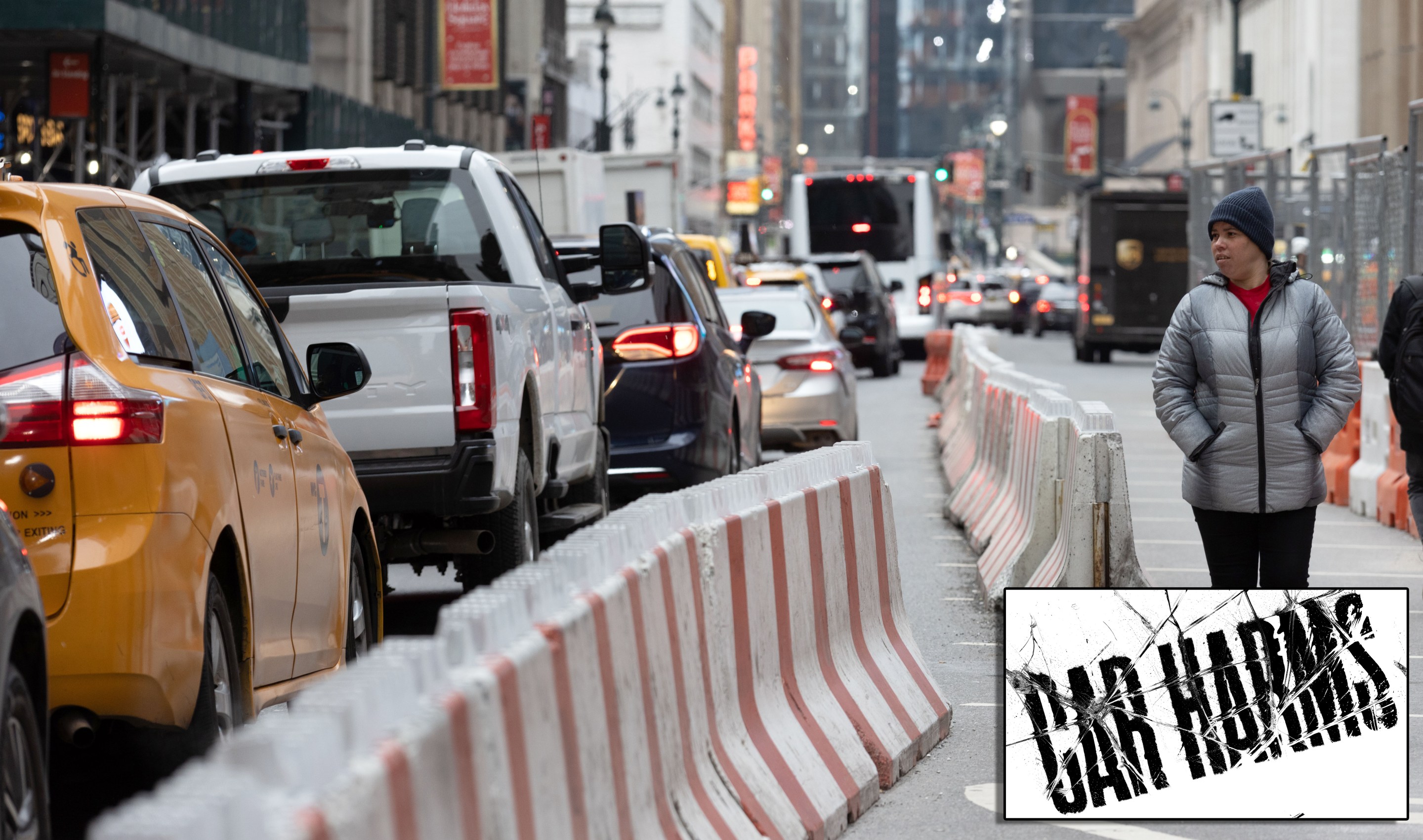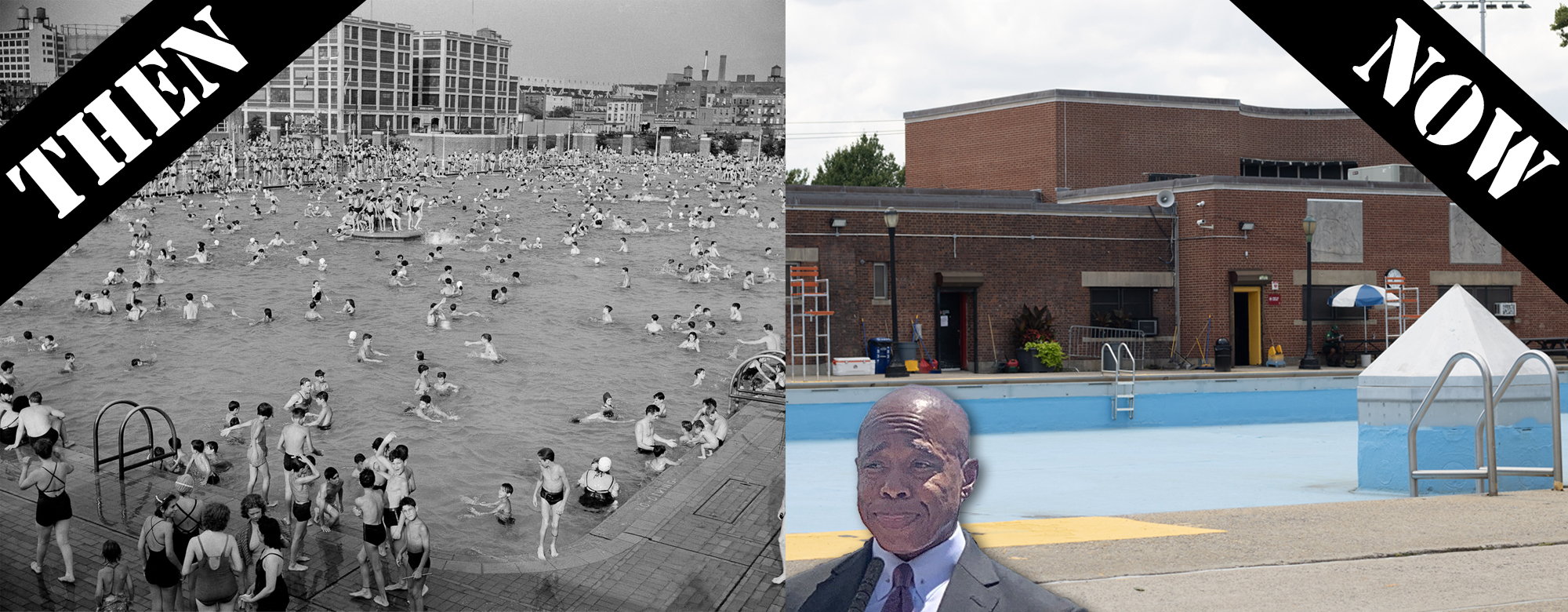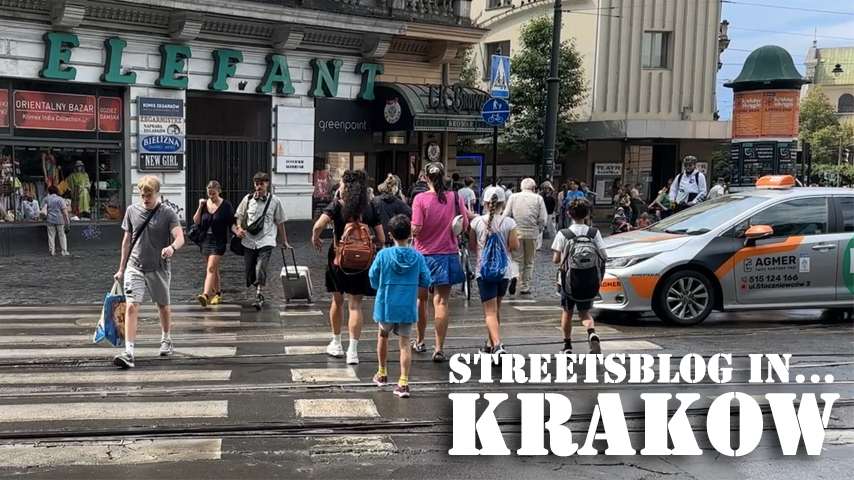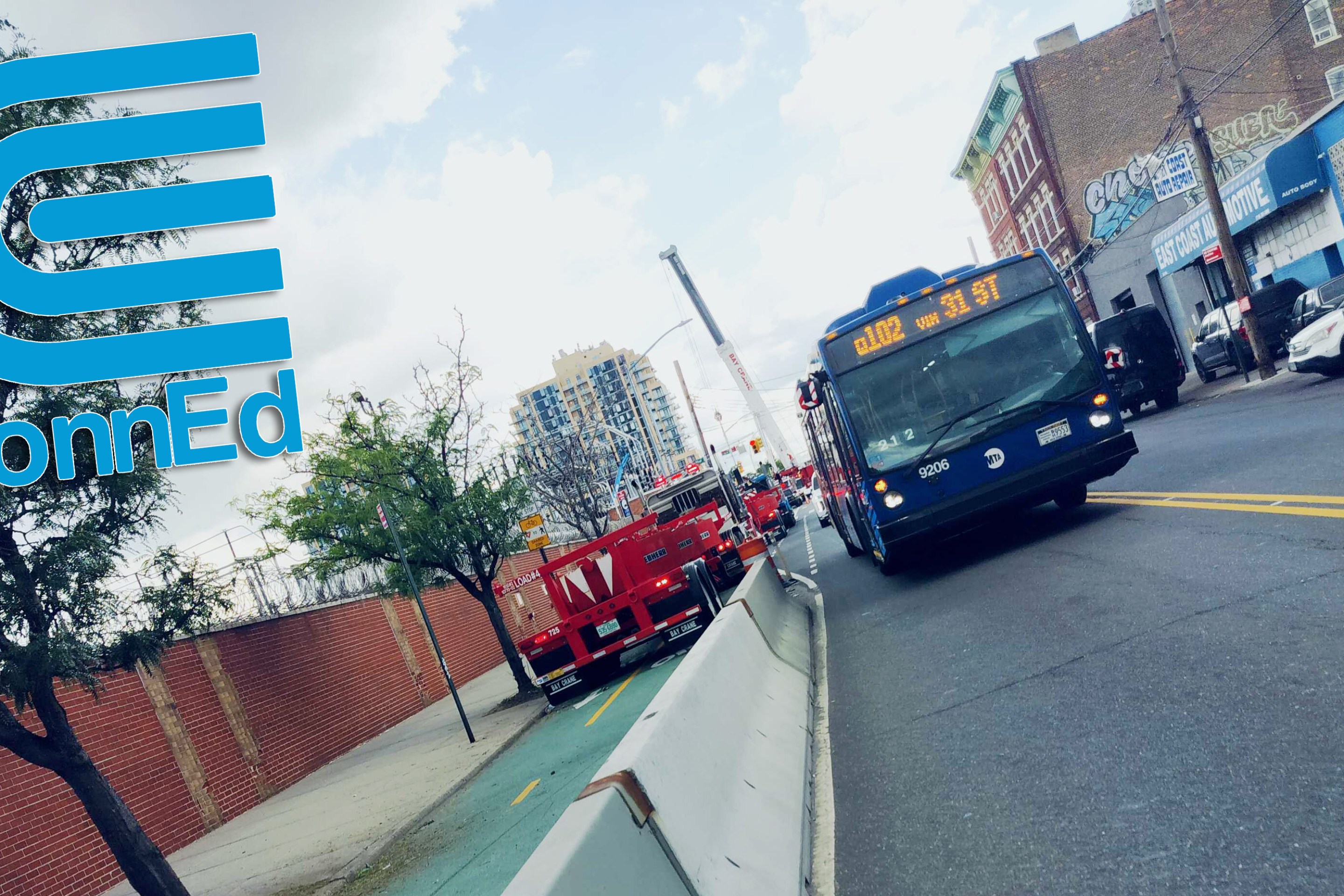
This essay is part of Streetsblog's "Car Harms" series, a package of stories designed to remind policymakers and the public of the hidden costs, dangers, inefficiencies and just plain old sadness that come from building our city around the needs of drivers. Auto-dependency has undermined the joy and beauty of our great urban spaces, and that must change. Click here to read the full series.
And if you are moved to make a small donation to keep series like these going in the future, please click here.
One measure of the pernicious dominance of cars on urban streets – even on Manhattan streets – is how often you don’t even notice them.
Because I write frequently about urban transportation and transit, I often hear complaints – from all sides – about people’s day-to-day movement through the city. One of the most common complaints: that the bus lane or the bike lane is a waste of space because it is “empty.” People stewing in traffic on Fifth or Madison Avenue look out from the back of a car, whether their own or an Uber or taxi, and see the vast red blankness of the avenue’s twin bus lanes – room they could be using to whiz by. Or, drivers idling in traffic on Ninth Avenue look to the bike lane and think: that empty lane is causing traffic.
But the fact that the bus and bike lanes are “empty” is a feature, not a bug. The bike lane looks empty because cyclists move efficiently: they don’t get stuck behind other cyclists making turns and they don’t double-park at the curb to drop off passengers or stuff. The bike lane looks empty because the cyclists have already glided by, so efficiently as to be invisible. Likewise, the bus lane looks empty, but it is really full of buses – up to 130 an hour, with bus passengers outnumbering passenger and for-hire car occupants two to one. It’s just that the buses have already efficiently gone by the cars, because, even with frequent stops, they don’t get stuck behind each other in an unpredictable fashion.
People stuck in a car in a lane next to a bus or bike lane, in other words, shouldn’t be mad at the bus or the bike lane. If they had access to the bus or bike lane, it, too, would quickly clog with cars and trucks. They should be mad at the cars (and trucks) in front of them. But they are not. They don’t even see the other cars that are blocking their path.
Likewise, think about how we view parked cars versus other uses for the same space. Many opponents of the city’s outdoor-dining program object to the curbside cafes because, they say, the sheds become eyesores. They are empty some of the time. They represent the privatization of a public street.
But one could say the same thing about the objects the cafes replaced: parked cars. Inert hulks of metal and plastic that are ugly. And are empty. They block emergency vehicles and fire hydrants. And they are private property – even more so than a café, as anybody can eat at a café, but I cannot borrow someone else’s parked car.
Yet, walking around, we don’t even see the parked cars, the same way we notice the dining sheds. The cars are just part of the default landscape.
It wasn’t always this way. Through the first quarter of the 20th century, efficient public transit – streetcars, which moved a billion passengers a year – dominated major avenues and cross streets, with tracks right down the middle. Earlier than that, pedestrians and horse-drawn carriages and wagons informally navigated each other’s paths, walkers striding right through the roadway to cross.
But, starting in the 1910s, streetcars gave way to buses, stuck behind cars. Why? Because cars needed that track space. A decade later, New York got its first traffic lights. Why? Because drivers of clunky cars could not effectively navigate the same space as pedestrians and earlier vehicles had; they got in the way of each other and of pedestrians. In the 1950s, the city formally legalized overnight public-street parking in residential neighborhoods. Why? Because cars were so cumbersome that there was no other practical place to put them. Also after World War II, the city began narrowing sidewalks and adding and widening road lanes, as the efficient form of transportation – walking, often after a transit trip – made way for the less efficient.
Cars thus came to dominate the city’s streetscape and sidewalkscape by the end of the 1950s, not because cars are the most effective and economical way of moving through an urban landscape, but because they are the least effective way of doing so; they needed everybody else – trolley riders, people crossing diagonally on foot, children playing stickball – to get out of their way.
Like the neediest sibling in a family or the least apt performer in the marching band or the crazy uncle who dominates Christmas dinner, cars get the most attention because they need the most attention. And if it’s this way in a city like New York, where fewer than half of households on private vehicles and only 11 percent of people drive regularly to the Manhattan core for their commute, it’s far worse for most American cities, where the critical mass of transit options and thus foot traffic just doesn’t exist.
In fact, it’s a measure of cars’ dominance that even the clawing back of a tiny bit of space from them causes such an outcry. Outdoor dining, at its peak, consumed far less than one percent of the city’s three million parking spaces. On each of Madison and Fifth avenues, lanes for cars and delivery vehicles take up 60 percent of the roadbed. On crosstown Manhattan streets, bike lanes comprise a narrow strip near the curve, compared, often, to two lanes of parked cars that leave a narrow funnel for moving motor vehicles. On major avenues, the bike lane still leaves room for three to six lanes for motor traffic, whether moving, standing, or parked. And at any major intersection, dozens of pedestrians often wait in the rain or cold for a half-dozen or so cars to pass through – and then the pedestrians also wait through the first few seconds of their walk sign for errant cars to illegally blow through the red light.
The ”war on cars” has become a trope, but it’s been not so much a war as a rear-guard skirmish. In a real war (metaphorically speaking, of course), New York’s default stance toward the car would be: yes, you can bring your private car, or hire a paid ride, on our dense streets and avenues, just as you can put an elephant on a leash and walk it around town if you like. But in most cases, it’s not obvious why you would. We’ll bemusedly make a path for you and your strange creature as you lumber around corralling your clumsy multi-ton vehicle, sure, but we’re not going to rearrange our lives for you. You should expect to drive slowly – very slowly – on a narrow traffic lane, you should expect to yield to all pedestrians and cyclists, and you should expect to pay for a place to store your vehicle during the 90 percent-plus portion of the time that you’re not actively driving it.
Yes, some people need their cars to drive around, but rather than remake the city for this minority, the minority should fit themselves into a far more functional urban transport landscape featuring buses, subways, bikes and micro-mobility and, of course, feet.






